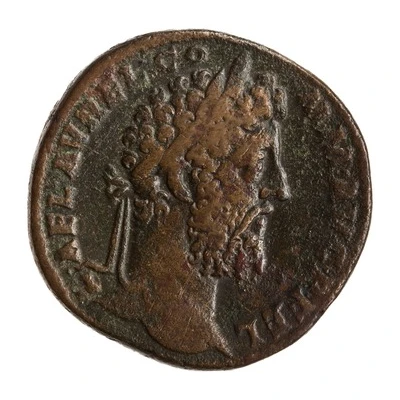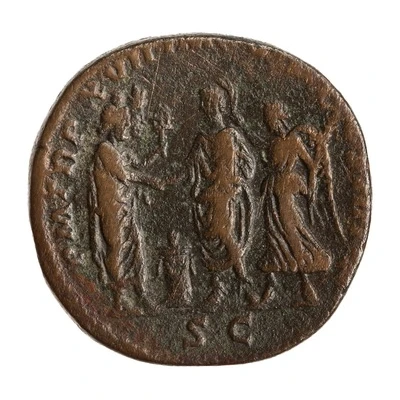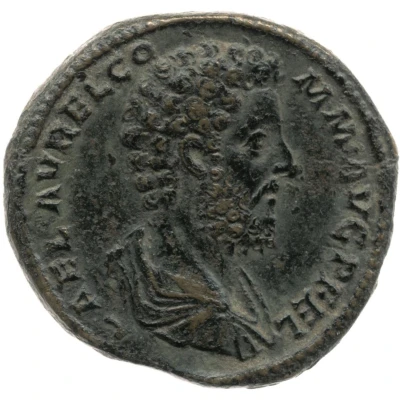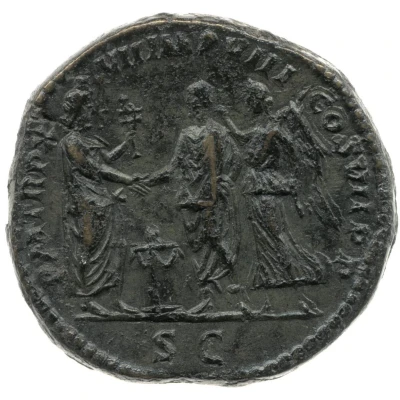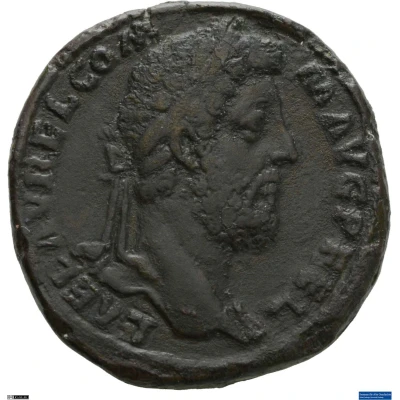
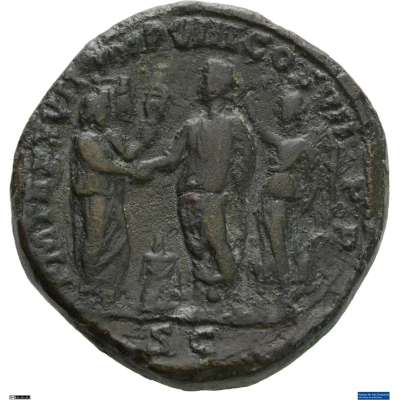

© Münzsammlung des Seminars für Alte Geschichte, Albert-Ludwigs-Universität Freiburg (CC BY-NC-SA 3.0 DE)
Sestertius - Commodus P M TR P XVII IMP VIII COS VII P P S C; Serapis, Isis, and Victory
192 year| Bronze | 27.7 g | 32 mm |
| Issuer | Rome › Roman Empire (27 BC - 395 AD) |
|---|---|
| Emperor | Commodus (Lucius Aurelius Commodus) (177-192) |
| Type | Standard circulation coin |
| Year | 192 |
| Value | 1 Sestertius = ¼ Denarius |
| Currency | Denarius, Reform of Augustus (27 BC – AD 215) |
| Composition | Bronze |
| Weight | 27.7 g |
| Diameter | 32 mm |
| Shape | Round (irregular) |
| Technique | Hammered |
| Demonetized | Yes |
| Updated | 2024-10-06 |
| Numista | N#266008 |
|---|---|
| Rarity index | 100% |
Reverse
Commodus, togate, standing left, being crowned by Victory, and clasping right hands with Serapis, standing right, with Isis, holding sistrum, standing behind him; in center, lit altar.
Script: Latin
Lettering: P M TR P XVII IMP VIII COS VII P P S C
Translation:
Pontifex Maximus, Tribunicia Potestate Septima Decima, Imperator Octavum, Consul Septimum, Pater Patriae. Senatus Consultum.
High priest, holder of tribunician power for the 17th time, supreme commander (Imperator) for the eighth time, consul for the seventh time, father of the nation. Decree of the senate.
Comment
Example of this type:Münzsammlung des Seminars für Alte Geschichte, Albert-Ludwigs-Universität Freiburg
Source:
Online Coins of the Roman Empire (OCRE)
Interesting fact
One interesting fact about this coin is that it features a rare combination of deities from different cultures on its reverse side. Serapis, Isis, and Victory are all depicted together, showcasing the cultural diversity and syncretism that existed in the Roman Empire during the reign of Commodus. This blending of religious beliefs and symbols was a common practice in ancient Rome, and this coin serves as a unique example of that cultural phenomenon.
